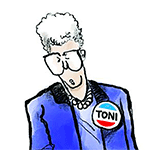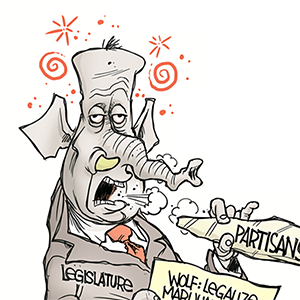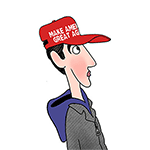Editorial: The Getty Museum survived the LA fires practically unscathed. There's a lesson there for all homeowners
Published in Op Eds
The J. Paul Getty Museum houses Vincent van Gogh’s “Irises” and many other priceless masterpieces in buildings that were dangerously close to the devastating Los Angeles wildfires. So where did the Getty staff take the art for safekeeping as flames and smoke approached?
Nowhere. The Getty itself, its president says, is the safest place for art during a fire.
That claim is being put to the test and, at least as we write, it’s holding up. For homeowners in Illinois and across the country, the Getty’s resilience against the inferno holds important lessons.
America has never been more vulnerable to catastrophes like wildfires, floods, severe storms and heat waves. For decades now, the population has shifted from less-disaster-prone cities like Chicago and New York to high-risk areas like coastal Florida.
The nation’s increasing exposure to natural disasters is a complex problem fueled not only by migration, but everything from climate change and government incompetence to shortsighted building practices. While there’s no single solution, the Getty’s experience during the wildfires suggest that everyday people can take simple steps to reduce their risks and, in at least some cases, protect their neighbors as well.
We understand the Getty is a crazy-wealthy institution. With a $9 billion endowment, it’s probably the world’s richest museum, and it was purpose-built to guard against the wildfires and earthquakes that plague LA.
No one expects a bungalow dweller in Chicago to invest in a stone aggregate roof, reinforced concrete walls or a million-gallon sprinkler system, as the Getty has. Even its air-conditioning system can pressurize the buildings to keep out smoke and ash that could damage the art. Cost, obviously, was not the top consideration during that construction project.
But how about combating water damage by checking roofs, gutters and downspouts for ice clogs? Or doing a little yard work and tree trimming during the warm months to help prevent fires or falling branches? Ever thought about reinforcing a double-entry door with a heavy-duty deadbolt to prevent it from blowing in during a storm? Or even just putting away outdoor furniture that can become projectiles when the wind kicks up?
These and other simple practices are known as “hardening” a home, and they can be accomplished affordably. In fact, going above the minimum building codes can sometimes save on insurance, and surely reduce the risk of heartbreaking consequences when disaster strikes.
While Illinois is relatively safe, the state routinely faces plenty of potential threats: ice and snow during winter blizzards, destructive hail and high winds from summer storms, flooding from heavy rains and snow melt.
Tornadoes are among the scariest perils facing the state. While there’s no sure protection from a direct hit, cheap fixes like installing straps to a roof’s structural beams can make it strong enough to resist when winds threaten to lift it up and collapse it back down on a building. Beyond protecting property, spending a few bucks on hardening a home — not to mention keeping smoke and carbon-dioxide alarms in working order — can go a long way toward saving lives.
At the Getty, one of the most important safety practices has been keeping up with the landscaping. Its two campuses are planted with drought-resistant bushes and trees, their canopies aggressively pruned “to prevent them from becoming fuel for a fire,” as the museum explains on its website. Its irrigated Central Garden is designed to create a fire break that can be kept damp when conditions warrant it.
As we know now, conditions certainly do warrant it. Fire experts say LA was acutely vulnerable this year. The previous two years had been unusually wet, bringing floods and mudslides. The moisture caused plants to grow much more than usual. After a period of heat and drought began last summer, the plants dried up and turned into tinder. In many cases, property owners and government authorities failed to keep up with the desiccated brush that was an accident waiting to happen.
As this page has stated previously, our hearts go out to the residents of LA facing this awful crisis, and we urge everyone to support efforts to make the city stronger as it rebuilds. We’re hopeful that this month’s disaster will give way to a more resilient, sustainable future.
___
©2025 Chicago Tribune. Visit at chicagotribune.com. Distributed by Tribune Content Agency, LLC.



























































Comments